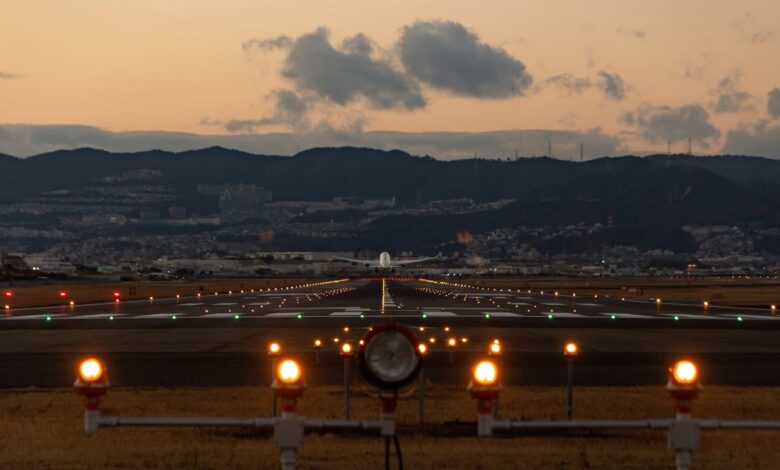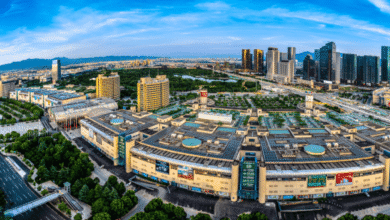Why It’s Important For Businesses To Purchase High-Quality Aircraft Lights

Aircraft lighting is an essential component of aviation safety and efficiency, providing visibility and communication in the air and on the ground. High quality airplane lighting enhances the passenger experience, supports regulatory compliance, and helps to ensure flight operations’ reliability. Here’s a detailed look at why high-quality lighting is an essential investment for aviation companies seeking operational excellence and safety.
Enhancing Visibility and Safety in Diverse Weather Conditions
High-quality aircraft lights are essential for maintaining visibility throughout the flight, especially in adverse weather conditions. Improved precision and confidence help pilots negotiate low-visibility conditions like fog, rain, and high cloud cover using superior illumination systems. To reduce the risk of collisions, runway lighting, wingtip lighting, and landing lights cooperate to keep the aircraft visible to other pilots and ground crew. Additionally, these lights help in identifying nearby obstructions like mountains or tall buildings, which is especially important when flying over difficult terrain.
Supporting Regulatory Compliance and Standards
Aviation authorities like the International Civil Aviation Organization (ICAO) and the Federal Aviation Administration (FAA) have established stringent regulations that aircraft lighting systems must follow. These regulations address brightness, positioning, and functionality, ensuring that aircraft lights work properly under a variety of operating conditions. High-quality lighting products are intended to meet or exceed these regulatory requirements, making it easier for businesses to stay compliant and avoid penalties. Because they facilitate smooth communication with air traffic control and other aircraft, properly operating lights are essential for safe operation. Companies which prioritize regulatory compliance demonstrate a commitment to safety, which can enhance their reputation and increase trust with passengers and regulatory bodies.
Improving Operational Efficiency and Reducing Maintenance Costs
Premium lighting systems are designed to withstand extreme conditions such as high altitudes, temperature fluctuations, and moisture exposure, all of which can prematurely wear lower-quality lights. LED technology, which is frequently utilized in contemporary aircraft lighting, offers a longer service life than conventional lighting options, with bulbs lasting significantly longer. This longevity lowers the frequency of replacement activities and maintenance, lowering the general maintenance expenses and the downtime. Choosing robust, effective lighting systems helps companies to simplify processes so that ground workers and maintenance teams can focus on other critical activities, therefore supporting operational efficiency.
Enhancing Passenger Experience and Comfort
Interior aircraft lights, such as overhead and reading lights, are intended to create a functional and aesthetically pleasing environment in which passengers can read, work, or relax comfortably. Particularly on long-haul flights, cabin lighting systems that replicate natural sunshine serve to lessen jet lag and provide a relaxing environment. Good illumination also makes emergency exits clearly visible, therefore improving passenger safety and peace of mind. Companies that invest in high-quality interiors demonstrate their commitment to passenger comfort, which is crucial for developing customer loyalty and improving the overall perception of their brand.
Contributing to Environmental Sustainability
Modern aircraft lights, particularly LED options, are more energy efficient than traditional lighting systems, helping to reduce fuel consumption and carbon emissions. Furthermore, the longer lifespan of LED lights results in fewer replacements and less waste, which promotes sustainable operational practices. Companies that use premium, energy-efficient lighting solutions exhibit a dedication to sustainability as environmental concerns continue to grow within the aviation sector. This eco-conscious approach not only helps the surroundings but also aligns with the values of regulatory authorities supporting greener aviation methods and passengers who are mindful of the surroundings.
Conclusion
Investing in high-quality aircraft lights is critical for aviation businesses that prioritize safety, efficiency, and passenger satisfaction. From improving operational longevity to supporting regulatory compliance, premium lighting solutions provide a basis for safe and environmentally friendly operations. By prioritizing high-quality lighting, aviation companies can ensure dependable, effective performance that improves both safety and overall flying experience.




